WeedWhacker
Senior Member
You can watch the Pilots visibly shaking in their seats due to the onset of flutter ...
No, that also is not flutter. Mach buffet.
You can watch the Pilots visibly shaking in their seats due to the onset of flutter ...
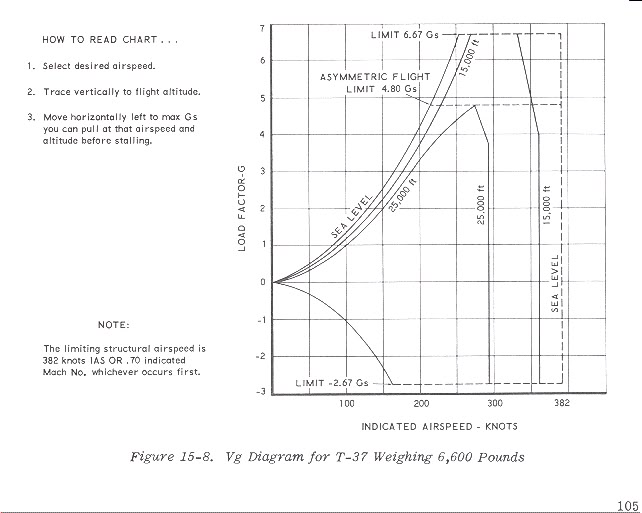
Playing the Vd definition by a journalist card, which is not based on the real definition is not good for much. Using a journalistic piece as an expert is not going to hack it.I have already explained why you are wrong using the FAR you sourced while giving you calculations and instruction proving you are wrong. You just didn't like the answer and continue to censor. You will continue your pointless censorship since the answers are not to your liking and repeatedly prove you wrong. Your censorship is pointless due to the fact people are reading my posts no matter where they are.... in your "Rambles" section, or at the P4T forum.
Another great example which proves you wrong is in the alleged text from TWC's "Test Pilot" regarding the A380. I have referenced it many times for you, weedwhacker has even posted the video above, and now the "Test Pilot" has also made reference.
.96 Mach is Vd/Md for the A380. Not "Vd+20%". You can watch the Pilots visibly shaking in their seats due to the onset of flutter as they approach the aircraft Vd/Md. In fact, the airplane broke at .93 Mach, the flutter test had to be aborted, the airplane was then modified, and then the test resumed to certify the airplane to Vd/Md.
Again, scroll to the bottom of this page and learn....
http://theflyingengineer.com/tag/vdmd/
... and actually watch the video...
A piece of the aircraft did come loose. However, that was the test flight AND it was redesigned to address that problem. The production model, after test flight certification, would not do the same thing.No. The "airplane" didn't break.
A piece of the aircraft did come loose.
And, specifics:The NTSB defines an “aircraft accident” to mean “an occurrence associated with the operation of an aircraft which takes place between the time any person boards the aircraft with the intention of flight and all such persons have disembarked, and in which any person suffers death or serious injury, or in which the aircraft receives substantial damage.” The first portion of this definition is especially important to note for maintenance and ramp personnel. The initial threshold for classification as an aircraft accident is that the aircraft is being operated “with the intention of flight.”
There are various other criteria that immediately trigger the term "Accident", even if there is no aircraft damage related...such as the death or severe injury to a person.The NTSB defines “substantial damage” as “damage or failure which adversely affects the structural strength, performance, or flight characteristics of the aircraft, and which would normally require major repair or replacement of the affected component.”
The regs as applies to the Airbus: ( bolding mine)Note also that 0.96M +15% would be above 1.0 M so that would not apply.
For normal conditions without failures, malfunctions, or adverse conditions, all combinations of altitudes and speeds encompassed by the VD/MD versus altitude envelope enlarged at all points by an increase of 15 percent in equivalent airspeed at both constant Mach number and constant altitude. In addition, a proper margin of stability must exist at all speeds up to VD/MD and, there must be no large and rapid reduction in stability as VD/MD is approached. The enlarged envelope may be limited to Mach 1.0 when MD is less than 1.0 at all design altitudes, and
(2) For the conditions described in Sec. 25.629(d) below, for all approved altitudes, any airspeed up to the greater airspeed defined by:
(i) The VD/MD envelope determined by Sec. 25.335(b); or
(ii) An altitude-airspeed envelope defined by a 15 percent increase in equivalent airspeed above VC at constant altitude, from sea level to the altitude of the intersection of 1.15 VC with the extension of the constant cruise Mach number line, MC, then a linear variation in equivalent airspeed to MC + .05 at the altitude of the lowest VC/MCintersection; then, at higher altitudes, up to the maximum flight altitude, the boundary defined by a .05 Mach increase in MC at constant altitude.
the whole pft concept is silly anyway. theres no point in building a specially strong plane to crash into a building when it's easier to just teach the kamikaze pilot how to fly the plane properly.I stated:
The regs: ( bolding mine)
Further to that, PfT makes the claim it was done so in order to get the plane to NYC before the interceptors. However flight 175 slowed down after being hijacked. They could have avoided having to modify an aircraft by simply pushing to max cruise speed and staying there until lined up with WTC 2.the whole pft concept is silly anyway. theres no point in building a specially strong plane to crash into a building when it's easier to just teach the kamikaze pilot how to fly the plane properly.
...PfT makes the claim it was done so in order to get the plane to NYC before the interceptors.
Certainly not. http://en.wikipedia.org/wiki/McDonnell_Douglas_F-4_Phantom_IIWasn't an F-4 Phantom a subsonic fighter but quite capable of going above Mach 1 in a dive? Doesn't apply to thread but seems to me I read that when I was a kid( which at my present age, means some time before I hit 30)
....and daytime TV sucks.
Not an ice pellet's chance in a well known hot place that I would allow my TV to go there"Jerry! Jerry! Jerry!"
OK, in the video "9/11 Intercepted" at time approx 20:20 the narrator asks "Was this aircraft modified to beat Otis fighters to its target..."It was a while ago, let me see if I can find it again. I'm at home with a bad cold so I have time on my hands and daytime TV sucks.
Note that Vd is a certification speed, not an actual operating limit, so it does not show up in the 767 flight manual. However the lower speed Vmo does:
VD = 420 KCAS to 17,854 ft/.91M above 23,000 ft, linear variation between these points. VFC = 390 KCAS to 17,600 ft/382 KCAS at 23,000 ft/.87M above 26,000 ft, linear variation between these points.
VMO = 360 KCAS/.86M
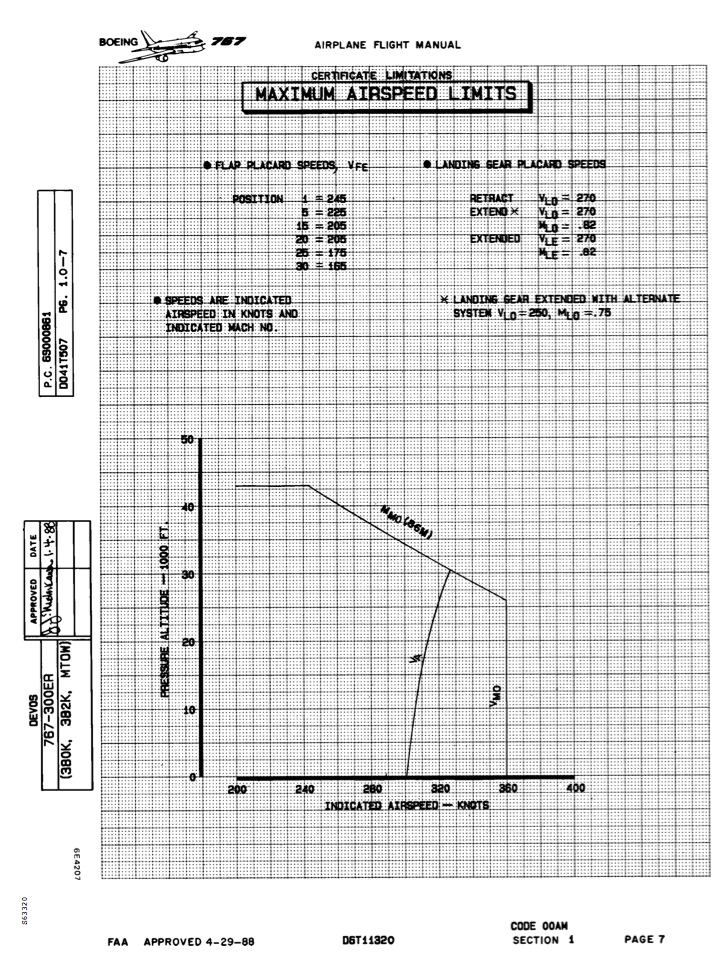
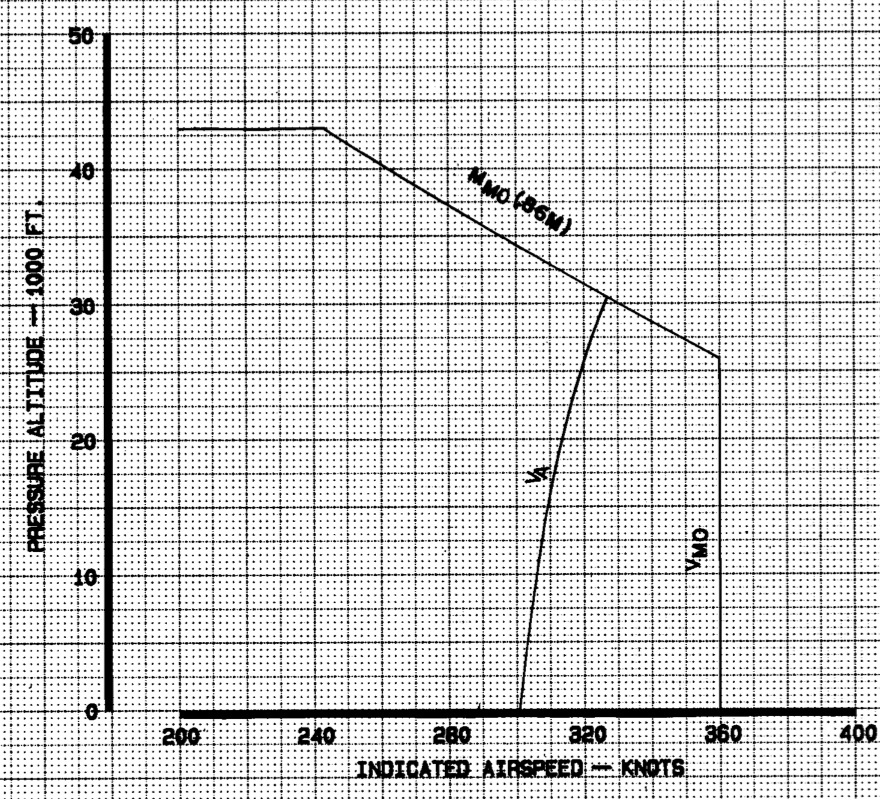
Notice the Vmo is a constant indicated airspeed below 26,000 feet.
Another poster also has an opinion concerning Vd and Balsamo again responds :I notice you posted this in the thread, which I need some clarification on.
"in equivalent airspeed at both constant Mach number and constant altitude"
So does this mean that the 15 percent increase in all combinations of altitudes and speeds encompassed by the VD/MD only applies when the altitude and speed are constant?
Rob Balsamo replies:
The regulation is clear. What do you think it means? MikeC understands it.... and in fact I replied to his post in agreement... but Mick deleted it.
Therefore this means that this regulation does not apply when aircraft are in a dive, decreasing in altitude, and increasing in speed, because the speed and altitude are not constants.
Am I correct?
Hmmm... seems you know more than the self-proclaimed "Private Pilot" known as "Mick West"
My take is that those values are for certification purposes only, for engineering purposes, but I am no engineer.
Operational considerations are shaped by the regs of course, but how the aircraft actually flies, and what might happen in any given situation, doesn't have much to do with the regs.
Very good point, and one that the 'duhbunkers' continually fail to understand.
The regs (in this case) were meant for a brand new airplane being certified. This does not compare in any way to a nearly 20 year old airplane with tens of thousands of cycles, and precedent proves as such
The constant stuff is what you see in aeronautical engineering. This will not be explained by pilots for truth, they avoid reality based sources.It's interesting that that while the regs for Flutter and divergence prevention say "at both constant Mach number and constant altitude", the flutter testing is actually done in a shallow dive, and with the speed gradually increasing.
Of course you can't actually just magically fly a plane at Vd, you need to accelerate up to that speed. Nor can you instantly fly a plane at Vd+20%. So a plane being safe up to Vd+20% must logically encompass the process of actually getting to that speed. The only way of doing this would be to accelerate, possibly in a shallow dive.
These are additional details though. The basic claim of Vd being a hard limit with no safety margin has been debunked. I really don't think we want to waste too much time debunking "claims" that we have to infer from passing comments on other boards. Especially on page 3, which very few people will read.
. The following three paragraphs being simple demonstrations of resonance, which is a concept far from exclusive to aircraft, and I thought might be better envisioned in a simpler scenario.My take on flutter is as a resonance phenomena:
Now, what about the effect of age on an airframe?
Mr. Balsamo seems to forget that aircraft must undergo constant checks to ensure no adverse structural effects. This year Boeing 727s were required to increase frequency of inspections of their wing components to ensure that micro fractures have not developed.
These are not private passenger automobiles, "beaters" ready to drop parts or break down due to age. There are still DC-3s, and Norseman aircraft flying that are as old or older than I am and still in very good shape( wish I could say the same for me). Those that aren't have been removed from commercial operations.
So, we must accept that if an aircraft is in passenger carriage, commercial operation, it also meets continuing flight certifications and is at least close to the new aircraft pristine condition it was in when it rolled out of the Boeing plant.
Is it still good to Vd +20%? Quite possibly not.
Vd of the 767, 420 knots was it?
20% = 84 knots
10% = 42 knots
The FAA 25.629 Figure 1A for SpaceC/BalsamoIt's interesting that that while the regs for Flutter and divergence prevention say "at both constant Mach number and constant altitude", the flutter testing is actually done in a shallow dive, and with the speed gradually increasing.
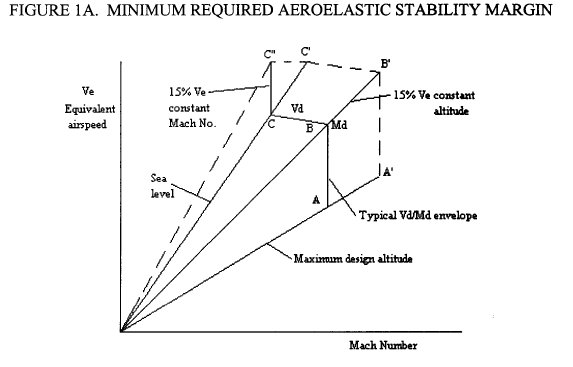
I know this is an old comment but I just saw it. An F4 Phantom was capable of Mach 2.2.Wasn't an F-4 Phantom a subsonic fighter but quite capable of going above Mach 1 in a dive? Doesn't apply to thread but seems to me I read that when I was a kid( which at my present age, means some time before I hit 30)
Yeah possibly the F86 I was conflating with the F4 for some odd reason.I know this is an old comment but I just saw it. An F4 Phantom was capable of Mach 2.2.
But there was probably at least one plane that WAS exactly as you described. a spitfire would get reasonably close,(one got to 0.92 mach once although the propeller did break off in the process)
you were probably thinking of something like the F86 Sabre. That would seem to fit the bill quite well.
Yes, you admit that VD is not a structural limit "at constant mach and altitude" and that the FAA certification includes a check of zero flutter at 1.2VD in this case ?Mick,
I'll give you a hint....
the 1.2VD requirement is based on "an increase of 20 percent in equivalent airspeed at both constant Mach number and constant altitude" - FAR 25.629
Were the aircraft on 9/11 remaining at a constant airspeed and altitude while lining up with their targets?
Anytime you wish to actually learn from real and verified pilots on the matter, instead of interpreting the FAR's based on your bias... feel free to make a post at the P4T forum and become educated.
Hmmm... will you approve this post?
While he may very well read posts on this forum, SpaceCowboy no longer posts here after having his derriere handed to him. (though he would probably characterize it as an inability to convince his detractors that they are all stupid)Yes, you admit that VD is not a structural limit "at constant mach and altitude" and that the FAA certification includes a check of zero flutter at 1.2VD in this case ?
We are talking about VD, the FAR 25.629 certification of VD and aeroelastic stability, not the 9/11 planes.
The debate first concerns your lies about : VD is a structural limit.
You are trying to confuse us about the 767 VD certification in 1982 and the 9/11 events !
So, after recognizing that VD is not a structural limit "at constant mach and altitude", can you explain us the figure 1A of the FAR 65.269 posted above (#107), the sea level line and C' value ?
While he may very well read posts on this forum, SpaceCowboy no longer posts here after having his derriere handed to him. (though he would probably characterize it as an inability to convince his detractors that they are all stupid)
His avatar shows his status as "banned"
Hi MickHe was banned. The posts that led to that can be found here:
https://www.metabunk.org/threads/spacecowboy-rob-balsamos-9-11-ad-hom-and-off-topic-posts.3399/
and the A380 flutter video.
I referred to the roll through 360 degrees, of this a/c, as a barrel roll. I see lately that this is not specifically accurate. It more resembles an aileron roll though in both cases that would imply starting and finishing at the same altitude.A piece of the aircraft did come loose. However, that was the test flight AND it was redesigned to address that problem. The production model, after test flight certification, would not do the same thing.
Note also that 0.96M +15% would be above 1.0 M so that would not apply.
However, we have also seen a 727 hit 0.96M WITH one slat extended and still manage to land despite this being well over Vd for a 727 let alone for one so oddly configured.
The 727 did more of an uncontrolled, diving, stuck slat roll. Probably not something anyone would care to repeat.
In other words, flutter prevention is only "at both constant ..." and not in conditions which would induce flutter ?The 1.15 factor above Vd (used to be 1.2) is for flutter and is based on theoretical calculations of equivalent airspeed at both a constant mach and constant altitude as pointed out in FAR Part 25.629. In other words, not maneuvering, diving... etc. In further words, no changes in static and dynamic pressure which would induce flutter. It is not a required flight test.
Every new airplane design or configuration undergoes “flight flutter testing” very soon after its first flight. The new airplane will operate with a severely restricted flight envelope (speed limits) until it has been cleared to higher speeds during the flutter tests. This is sometimes called “envelope expansion.” These tests are in part a demonstration of adequacy, in that the airplane must be adequately stable (damped) throughout its design operating range. This range includes flight envelope (altitude and airspeed), payload, fuel loading and possibly control system configuration.
A new airplane, undergoing flight testing, is instrumented with on-board sensors, signal conditioning and data recording equipment. For a flutter test, data are telemetered to a ground station where engineers monitor the signals, and the data from each flight condition are analyzed. The airspeed is increased in increments, up to its maximum flight speed envelope, as depicted in Figure 1.
Analysts perform modal analysis on the airplane at each test condition. The airplane is excited in some means and the
modal properties of the airplane are identified using the input and response signals. The aero-servo-elastic “modes”
which are identified, of course, include the airplane structure, unsteady aerodynamics and perhaps flight control system.
The purpose of the modal properties are to:
1) Clear to the next speed, 2) Certify adequacy of design, and 3) Validate, and possibly improve a model (flutter analysis).
The airplane flutter speed must be at least 15% higher than the operating flight envelope.
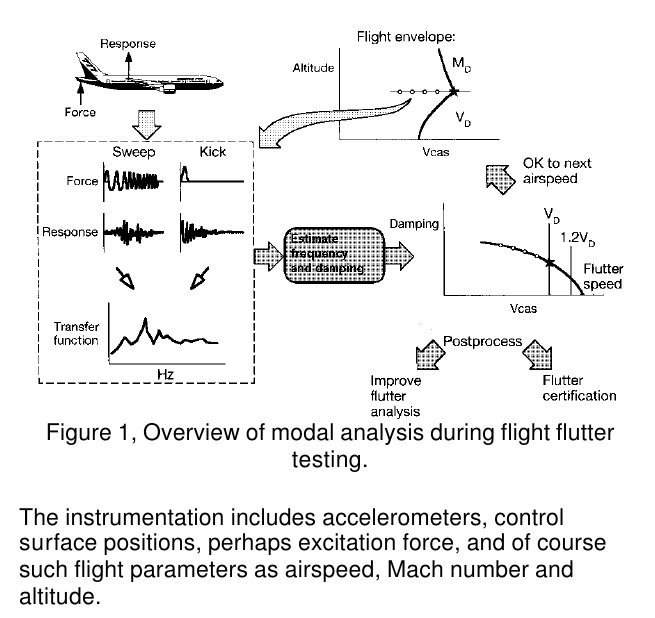
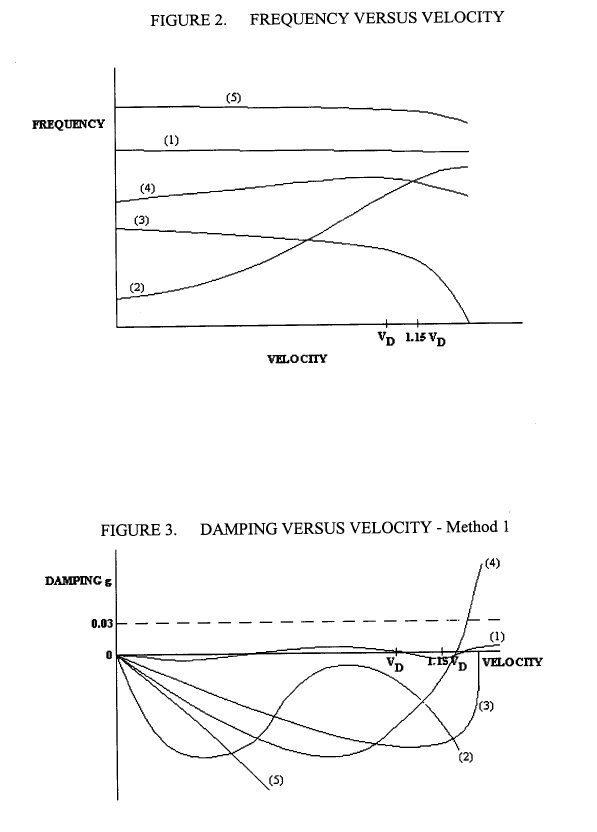
"at both constant Mach number and constant altitude" - Balsamo had no idea what this meant. Will he understand why he was wrong, will he understand the graph.The FAA 25.629 Figure 1A for SpaceC/Balsamo
[...] the design dive speed (VD) and design dive Mach number (MD) versus altitude envelope enlarged at all points by an increase of 15 percent in equivalent airspeed at both constant Mach number and constant altitude. Figure I A represents a typical design envelope expanded to the required aeroelastic stability envelope.

